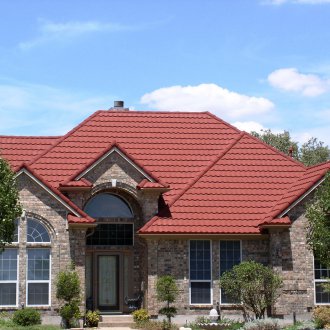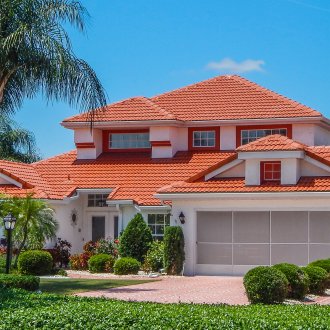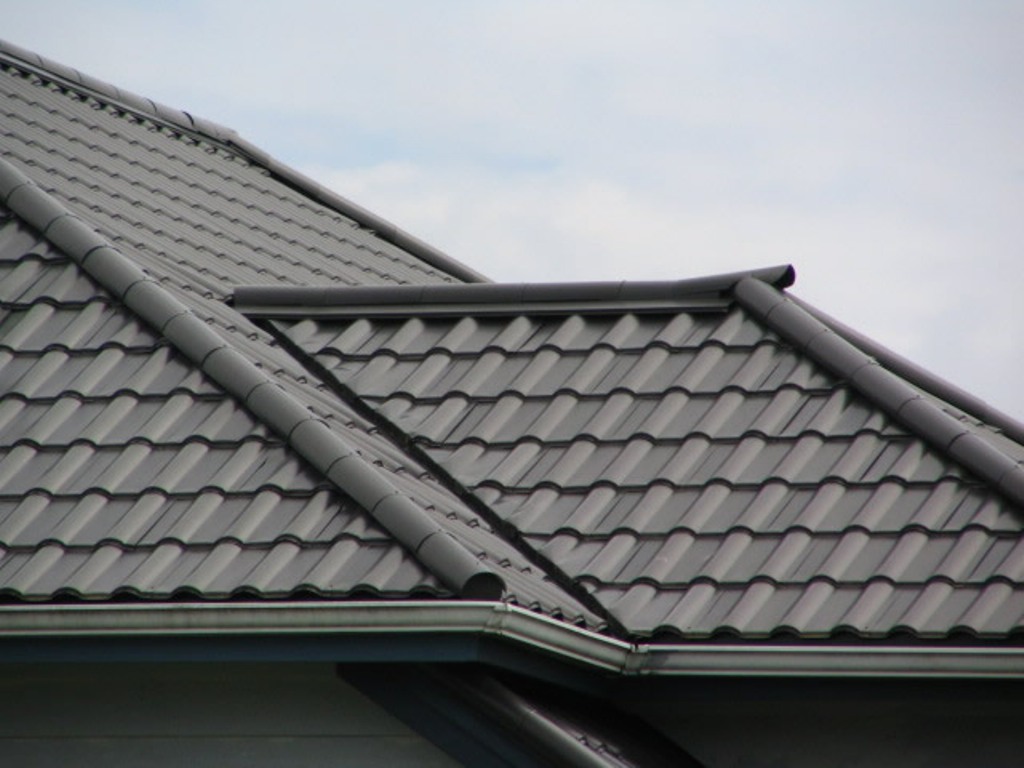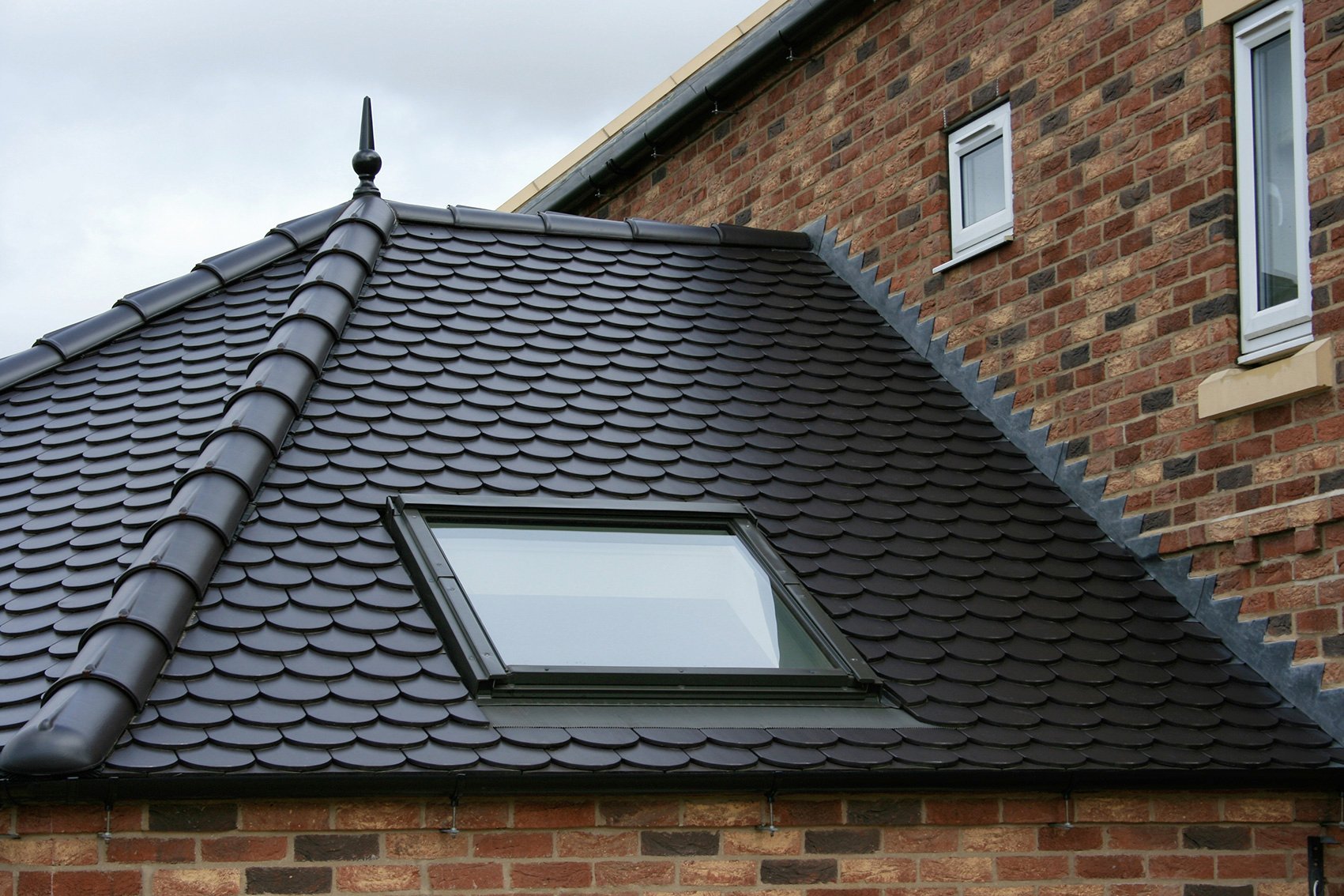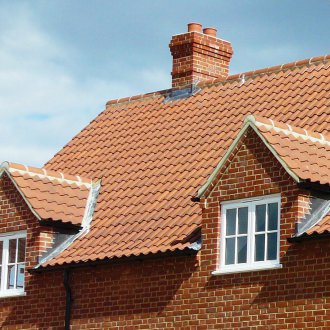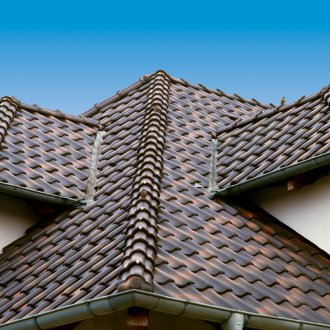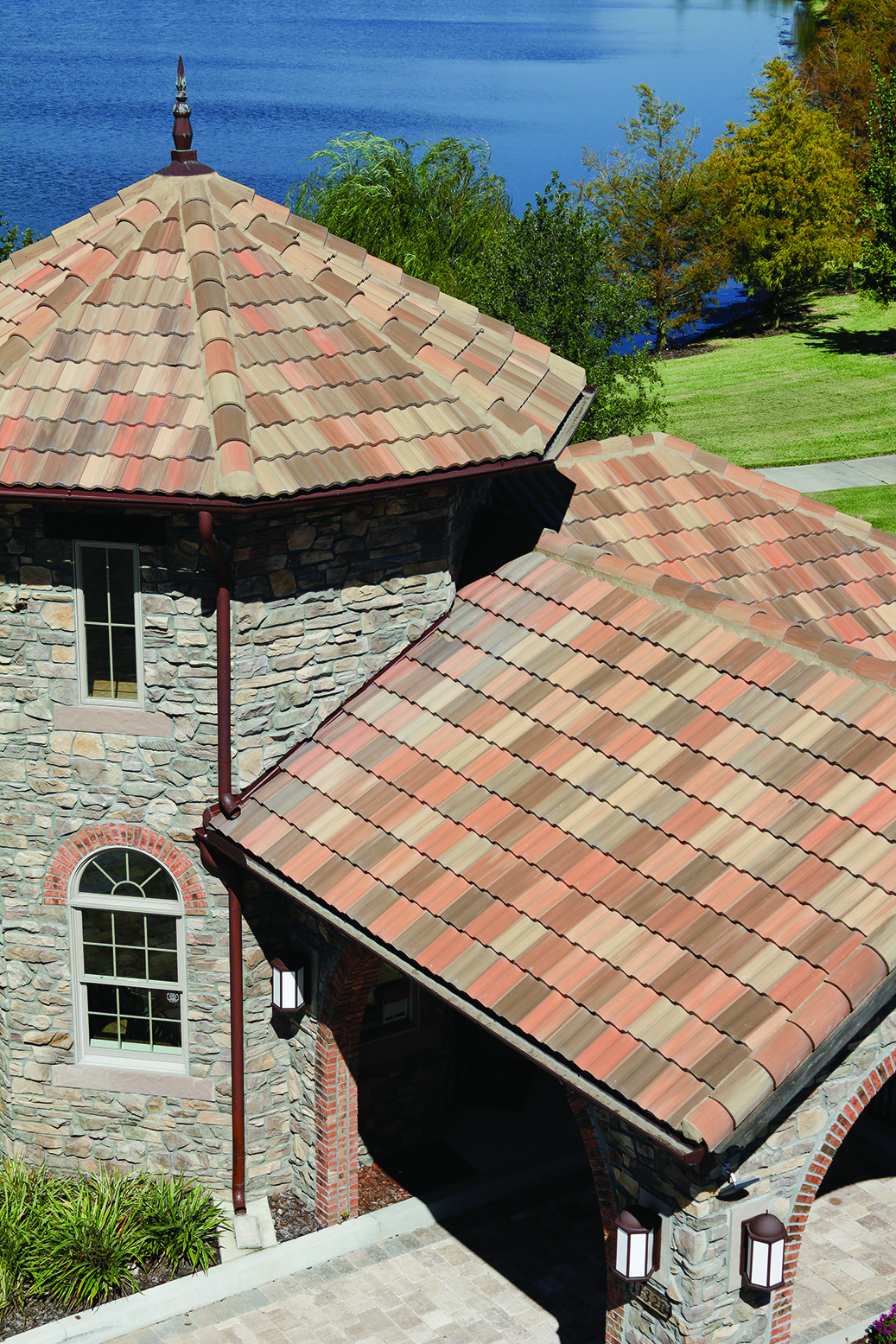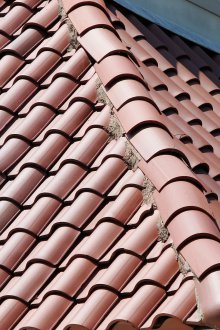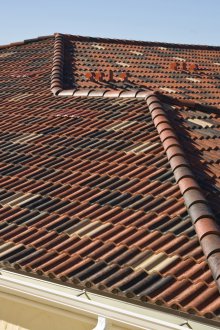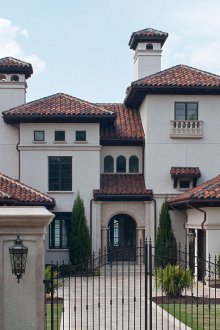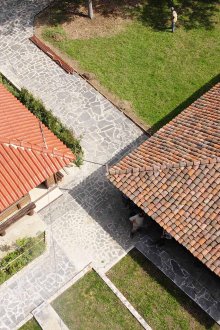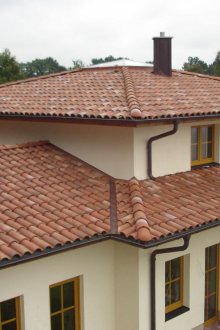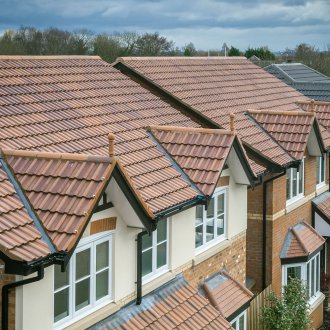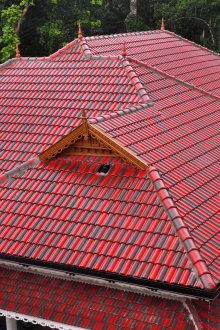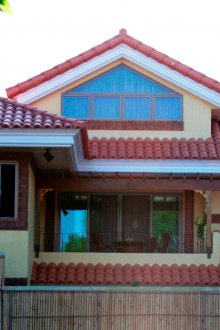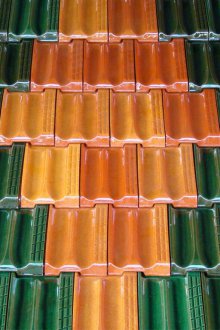How to choose a ceramic tile: the main aspects (20 photos)
Content
Even 10-15 years ago, the owners of the houses did not think about how their house was blocked and used slate or metal as roofing materials. Today, fashion has changed and now the roof is the “fifth” facade of the house, which should be beautiful, therefore, natural ceramic tiles are considered the ideal roofing material. It looks very beautiful, but the main thing is that with proper installation it does not leak.
Natural tile production
Ceramic roof tiles are environmentally friendly material. It is made from natural clay. Factories for the production of such tiles are located near clay quarries. Clay is mined, crushed, mixed with water and various chemicals that make the material more durable. Clay is mixed to a homogeneous mass, rolled into a tape, which is cut into plates. Then the plates are sent to the furnace, where, under the influence of high temperature, they solidify to the state of stone. Then the tile is covered with colored glaze. The colors of ceramic tiles are all shades of brown and red. Modern technologies make it possible to produce tiles with different surfaces. She may be:
- glazed;
- matte;
- edelangobirovanny;
- natural (without glaze).
Each type of tile will look different in bright sunshine. If glazed, similar to glass, will reflect it, then matte or natural, on the contrary, absorb it - it depends on how the house will look in different weather. Natural tiles can darken over time. The most popular and sought-after is red ceramic tiles. With her, houses look like ancient buildings in Europe, which several centuries ago were blocked by just such a tile.
What is good ceramic tile?
Advantages of ceramic tiles:
- environmental friendliness;
- durability;
- beauty;
- strength;
- reliability;
- low thermal conductivity.
Natural ceramic tiles can last about a hundred years. Many modern manufacturers set a life of 30 years, which is also a lot. Such a tile is not afraid of severe frosts and does not absorb moisture. She is also not afraid of the bright sun. And even after a long hot summer, it does not lose color and does not deform. It is an environmentally friendly material that breathes. Ceramic tiles "breathe", so condensation does not form under it.
Unlike metal tiles, static electricity does not accumulate on this one. And she is not afraid of the effects of acids and open flame. Even in the event of a fire, the ceramic tiles burned in the oven will not change shape and color. In some cases, at high temperatures, it may begin to burst. A roof from a ceramic tile is a profitable investment. Due to the low thermal conductivity, heat does not quickly leave the house, so the boiler can be set at a lower temperature and it is not so often to heat the stove or fireplace.
Such tiles have good sound insulation. With her, you can not hear how raindrops beat and the wind rages. It is shockproof: if a heavy object falls on top, it will not bend or break. Repairing such tiles is easy, you just need to replace the damaged sheet. Modern natural tiles have a rich color palette.You can choose the right shade of the roof, which will perfectly match the color of the walls.
Cons of natural tiles
There are significant disadvantages of ceramic tiles, because of which many homeowners make their choice in favor of other roofing materials. Ceramics is the same stone that has a lot of weight. Indeed, it weighs a lot, so the installation of ceramic tiles can only be done on a solid wooden frame. If you have long been dreaming of a red tile roof, you should appreciate it: do you have the time and opportunity to mount a frame made of wood, and whether the walls of the house can withstand this heavy construction.
The process of manufacturing tiles is very time-consuming and expensive, which is reflected in the price of the tile itself. She herself and installation work is expensive. During the economic crisis, due to the high price, many are forced to refuse to purchase ceramic tiles and buy rolled, which costs half the price.
Ceramics do not bend, but are easily scratched. Inaccurate installation or transportation on colored glazes may cause scratches and chips. And if the tile falls during the work on the ground, it can break, so laying ceramic tiles should only be performed by a professional team of craftsmen. You should not save on this.
Natural tiles can not be laid on all houses, but only on those whose roofs have a large slope angle, because the larger the angle, the lower the pressure of atmospheric precipitation on the roof. Roofs made of ceramic tiles should be made in houses in which the angle of inclination of the slope is at least 11 degrees, and ideally 50.
Choose a tile
Before you go to the hardware store for tiles, you need to study in detail some of the characteristics. Depending on the manufacturer, these roofing materials may have different dimensions. Most often, the size of such tiles is 39x24 and 33x42. It is believed that tiles of this size are most convenient to mount. A square meter weighs at least 40 k, and one element is about 4.5 kg, so a reliable wooden structure is needed for its installation.
Ceramic tiles can be of various shapes. The “beaver tail” is popular among buyers - flat tiles that are laid on top of each other. There is also a tiled-type tile - such elements have a convex ridge - it is also a groove when turned over. The easiest way to lay tiles is the groove type: the elements are laid in an even layer and are attached to each other using grooves.
What you need to know about installing roof tiles
Before installing ceramic tiles on the roof, a crate is installed, which must be continuous. So that water vapor does not accumulate under the roof, you will definitely need to take care of the ventilation system. To do this, holes are made under the cornice and at the ends. Air will enter through the first openings from below, and through the second openings it will go out with condensate. Also, when installing waterproofing between the rafters, a small deflection is necessarily left - then it will be easier to circulate the air. Waterproofing is nailed in increments of not more than 30 cm.
Before starting installation on the roof, you need to properly position the tiles. On the entire perimeter of the roof at an equal distance you need to put 5-6 tiles, then not the wooden rafters will be evenly distributed load. If you stack the entire supply of tiles in one place, the roof may not withstand and collapse.
On the roof, tiles are laid from bottom to top, from right to left. If the last tile in the row is too long and goes beyond the boundaries of the roof, it must be cut off, but they are cut not one at a time, but immediately after the installation is complete. A cut line is drawn with chalk or coal and the excess tile is cut with a special stone cutting machine. The work is dusty, so after its completion the roof will need to be well swept out.
The lower edge of the tile should protrude 4 cm. To align it under the lower edge of the wooden crate, a thick wooden board is attached. The installation of the roof ridge also has its own characteristics.
From each side of the roof slope an aero element is mounted on the upper horizontal rails. An additional beam is also attached to the upper part of the rafters. Roof tiles should not lie close to the beam. Between them it is necessary to leave a distance of half a centimeter. The end tile is nailed to a wooden block, the height of which is equal to the height of the tile in the rows. And the butt should definitely overlap the ordinary.
Ventilation holes are made in advance, at the stage of installing the wooden frame on the roof. It will be too late to make ventilation during the installation of tiles. There are many nuances in laying ceramic tiles, so if you do not have experience in working with roofing materials, it is better to entrust this work to specialists. There is a huge amount of video tutorials on the Internet on this topic, but there will not be enough information there to do this work yourself.
If you are building your dream home, do not save on roofing materials. If you have the financial ability, it is better to cover the house with ceramic tiles. This material will last more than a dozen years and for many years will not lose its beauty. Natural tile does not deteriorate from frost or the bright sun, it allows air to pass through, retains heat in the house, has high sound insulation and is absolutely harmless material. Having once spent money on this unique roofing material, you will definitely not regret your decision.
